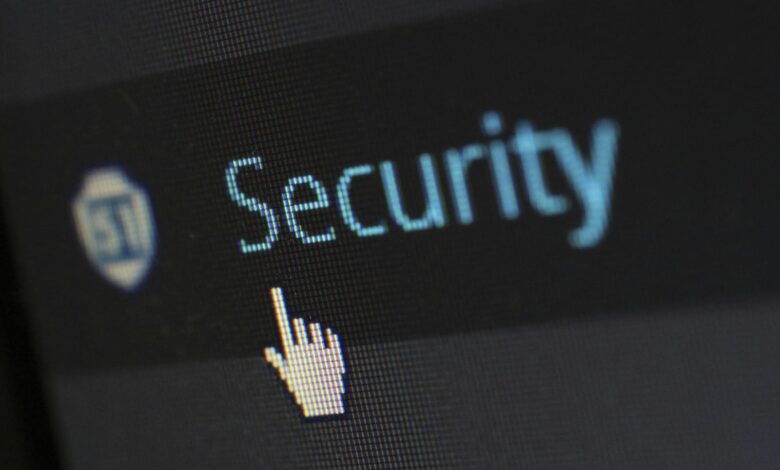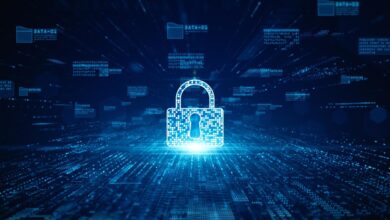Cybersecurity Challenges in the Energy Sector: Strategies for Protecting Critical Infrastructure

Cybersecurity is about keeping digital systems safe from hackers and other online threats. In the energy sector, it’s essential because we rely on energy for so much – from powering our homes to fueling our vehicles and running businesses. The critical infrastructure of the energy sector includes things like power plants, pipelines, and oil refineries, which are essential for keeping our society running smoothly.
However, these systems are not immune to cyber-attacks. Recent incidents like the Colonial Pipeline ransomware attack, where hackers shut down a major fuel pipeline, and the Saudi Aramco breach, where a major oil company’s computer systems were compromised, highlight the real and growing threat of cyber attacks in the energy sector. These incidents show just how vulnerable our energy infrastructure can be and why cybersecurity is so crucial in protecting it.
Types of Cybersecurity Threats in the Energy Sector
Knowing the different kinds of cyber threats in the energy sector is important because it helps companies protect their systems. By understanding these threats, energy companies can make plans to keep their systems safe from cyber attacks, which keeps everything running smoothly for everyone who uses energy.
- Malware:
Malware, short for malicious software, encompasses a variety of harmful software programs designed to disrupt, damage, or gain unauthorized access to computer systems. In the energy sector, malware can target critical infrastructure, such as control systems in power plants or oil refineries. Examples include ransomware, which encrypts files and demands payment for decryption, and Trojans, which disguise themselves as legitimate software to compromise systems.
- Phishing attacks:
Phishing attacks involve fraudulent attempts to obtain sensitive information, such as usernames, passwords, and financial data, by masquerading as a trustworthy entity in electronic communications. These attacks often involve deceptive emails, messages, or websites that trick employees or users into divulging confidential information or downloading malware. In the energy sector, phishing attacks can be used to gain unauthorized access to critical systems or facilitate further cyber attacks.
- Insider threats:
Insider threats refer to cybersecurity risks posed by individuals within an organization who misuse their access privileges or intentionally act against the organization’s interests. This may include employees, contractors, or other trusted individuals who abuse their authority to steal sensitive information, sabotage systems, or facilitate external cyber-attacks. Insider threats can result from malicious intent, negligence, or coercion, and they pose a significant risk to the security of energy sector infrastructure.
- DDoS attacks:
Distributed Denial of Service (DDoS) attacks involve flooding a targeted system, network, or service with an overwhelming volume of traffic or requests, rendering it inaccessible to legitimate users. In the energy sector, DDoS attacks can disrupt operations, cause service outages, or overload communication networks, impacting critical infrastructure such as power grids, oil pipelines, or energy trading platforms. These attacks may be used as a diversionary tactic or as part of a larger cyber attack strategy.
- Supply chain attacks:
Supply chain attacks target vulnerabilities in the interconnected network of suppliers, vendors, and partners that provide goods and services to the energy sector. Attackers may compromise third-party software, hardware, or services used by energy companies, leveraging these trusted relationships to infiltrate systems, steal data, or disrupt operations. Supply chain attacks can have far-reaching consequences, undermining the security and integrity of critical infrastructure and complicating incident response and recovery efforts.
Understanding Vulnerabilities in Infrastructure
The energy sector’s infrastructure faces significant vulnerabilities, starting with outdated technology and legacy systems that lack modern security features. Interconnectedness among different parts of the sector increases the risk, as disruptions can spread quickly. The absence of consistent security measures across the sector leaves openings for cyber attacks.
Human error and insider threats also pose risks, as employees may unknowingly or intentionally compromise security. Additionally, geopolitical tensions and state-sponsored attacks add complexity to the security landscape. To address these vulnerabilities, energy companies must invest in modernizing infrastructure, implementing standardized security protocols, and fostering a culture of cybersecurity awareness.
Collaboration with government agencies and industry partners is also crucial for sharing threat intelligence and best practices. Overall, a multifaceted approach is needed to protect the energy sector’s critical infrastructure from cyber threats.
Implications of Cybersecurity Breaches in the Energy Sector
Cybersecurity breaches in the energy sector have significant implications. First and foremost, they disrupt critical services such as power generation and fuel supply, leading to financial losses and operational downtime. These disruptions can ripple through the entire energy supply chain, affecting both businesses and consumers. Additionally, breaches can pose environmental and safety risks by compromising the integrity of energy infrastructure. For instance, an attack on a nuclear power plant’s control systems could endanger workers and nearby communities.
Cybersecurity breaches can harm a company’s reputation and erode customer’s trust. If customers feel their data isn’t safe or that the services are unreliable, they might turn to competitors, causing financial losses and a market share decline. Breaches also lead to legal and regulatory consequences. Companies may be fined or face legal action for not safeguarding information and infrastructure properly. Regulatory agencies might investigate, demanding proof of compliance with cybersecurity standards like the NERC CIP (North American Electric Reliability Corporation Critical Infrastructure Protection) regulations for the electric utility sector in the US.
Strategies for Enhancing Cybersecurity
After understanding the potential consequences of cybersecurity breaches in the energy sector, it’s clear that proactive measures are necessary to mitigate risks and strengthen defenses. These proactive measures can be done by:
- Adopting a risk-based approach to cybersecurity:
To protect the energy sector from cyber threats, start by figuring out which risks are the most serious. This means looking at all the possible ways hackers could attack and which ones could cause the most harm. Then, focus on fixing the most critical problems first, putting resources where they’ll have the biggest impact.
- Investing in modern technologies and infrastructure:
Recognize the importance of investing in modern technologies and infrastructure to strengthen cybersecurity defenses. Install advanced firewalls, intrusion detection systems (IDS), and secure network architectures to detect and prevent cyber threats effectively. Additionally, consider implementing technologies such as endpoint detection and response (EDR) solutions and security information and event management (SIEM) systems to enhance threat visibility and incident response capabilities.
- Implementing robust security protocols and encryption:
Use strong security rules and encryption methods to keep sensitive information safe in the energy sector. Use well-known encryption methods and protocols to protect data both when it’s stored and when it’s moving around. Set up secure ways for computers to talk to each other, like virtual private networks (VPNs) and secure sockets layer (SSL) encryption, to make sure data stays private and can’t be changed by hackers.
- Enhancing employee training and awareness:
Make sure employees know how to stay safe from cyber attacks by giving them good training and teaching them what to look out for. Teach them how to spot things like fake emails and dangerous websites and how to keep their computers safe from viruses. Encourage everyone to be alert and report anything suspicious right away, and keep training them regularly to stay up-to-date on cybersecurity.
- Collaborating with government agencies and industry partners:
Recognize the importance of teaming up with government agencies and industry partners to make energy systems safer from cyber attacks. Share information about cyber threats and solutions with each other. Join groups where everyone can talk about cybersecurity and practice dealing with cyber threats together.
- Establishing incident response and recovery plans:
Create detailed plans for what to do if there’s a cyber attack to respond quickly and effectively. Decide who’s in charge, how to communicate, and when to call for extra help. Practice these plans regularly to make sure they work well, and find ways to make them better after each practice session. After an attack, look at what happened and figure out how to prevent it from happening again in the future.
Tech Boost with AI and ML for Energy Security
Forbes predicts that artificial intelligence (AI) and machine learning (ML) will be big in both cyberattacks and cybersecurity. Cybercriminals will use AI and ML to make attacks smarter, so cybersecurity pros need to use AI, too, to stay ahead. The Department of Energy is already using AI to improve security in energy systems. They’re automating security tasks and using software to make systems more aware of threats. AI and ML will be even more important in the future, helping energy companies stay safe from cyber threats and manage data better.
AI and ML will be super helpful for the energy industry, says the International Energy Agency. They can handle the huge amount of data smart grids produce and help predict energy supply and demand. This means better maintenance of power systems, more control over energy grids, and better customer service. AI is also great for predicting when renewable energy will be available, helping match supply with demand.
Wrapping Up
In safeguarding energy systems, cybersecurity serves as the shield against harmful digital intrusions like viruses and scams. To strengthen defenses, it is important to invest in advanced technology, reinforce security protocols, and educate everyone involved. It’s important to keep watching out for new threats, share what’s happening, and work together with others in the industry to handle any new dangers.
3 Ways Technology is Going to Shape the Oil and Gas Industry Free to Download Today
Oil and gas operations are commonly found in remote locations far from company headquarters. Now, it’s possible to monitor pump operations, collate and analyze seismic data, and track employees around the world from almost anywhere. Whether employees are in the office or in the field, the internet and related applications enable a greater multidirectional flow of information – and control – than ever before.




